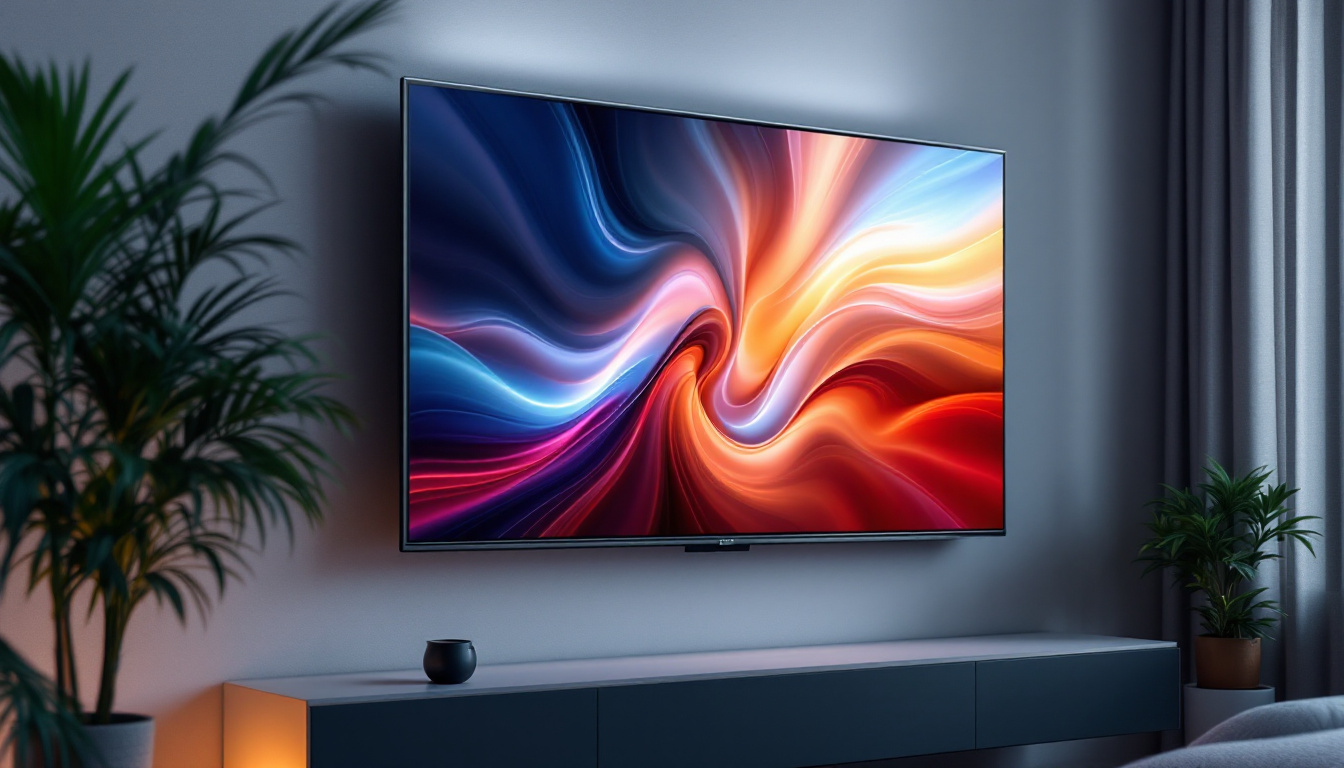The Eye Clamp is an innovative tool that has revolutionized the way LED displays are utilized in various industries. With its unique design and functionality, it offers a seamless solution for mounting and adjusting LED screens, ensuring optimal visibility and performance. This article delves into the intricacies of the Eye Clamp, exploring its features, applications, and the technology behind LED displays.
Understanding LED Displays
LED (Light Emitting Diode) displays have become ubiquitous in modern technology, serving as the backbone for everything from televisions to large-scale advertising boards. Their ability to produce bright, vibrant images while consuming less power makes them a preferred choice across various sectors. As technology continues to advance, the versatility of LED displays has expanded, allowing for innovative applications in areas such as automotive displays, smart home devices, and even wearable technology.
The Technology Behind LED Displays
At the core of LED displays is the semiconductor technology that allows diodes to emit light when an electric current passes through them. This technology has evolved significantly over the years, leading to improvements in brightness, color accuracy, and energy efficiency. The basic components of an LED display include:
- LED Modules: These are the building blocks of the display, consisting of multiple diodes arranged in a grid pattern.
- Control Systems: These systems manage the input signals and ensure that the correct images are displayed.
- Power Supply: A reliable power source is essential for maintaining the functionality of the display.
LED displays can be categorized into various types, including direct view, backlit, and organic LED (OLED) displays. Each type has its own set of advantages and applications, catering to different needs and environments. For instance, OLED displays are known for their exceptional color depth and contrast ratios, making them ideal for high-end televisions and mobile devices, while direct view LED displays are commonly used for large outdoor screens due to their superior brightness and visibility.
Benefits of LED Technology
LED technology offers numerous benefits, making it a popular choice for both consumers and businesses. Some of the key advantages include:
- Energy Efficiency: LED displays consume significantly less power compared to traditional display technologies, resulting in lower energy bills and a reduced carbon footprint.
- Longevity: LED lights have a longer lifespan, often lasting tens of thousands of hours, which reduces the need for frequent replacements.
- Brightness and Clarity: The ability to produce bright images even in direct sunlight makes LED displays ideal for outdoor advertising and events.
Additionally, LED displays are highly customizable, allowing for various sizes and shapes to fit specific design requirements. This flexibility has led to their widespread adoption in creative fields, such as art installations and stage productions, where unique display configurations can enhance visual storytelling. Furthermore, advancements in smart technology have led to the integration of LED displays with interactive features, enabling touch-sensitive screens and real-time content updates, which are transforming the way information is presented and consumed in both public and private spaces.
The Role of Eye Clamps in LED Displays
As LED displays become more prevalent, the need for effective mounting solutions has grown. Eye clamps play a crucial role in ensuring that these displays are securely mounted and easily adjustable. This section explores the importance of eye clamps in the context of LED technology.
What is an Eye Clamp?
An eye clamp is a specialized hardware component designed for mounting LED displays. It features a loop or “eye” that allows for easy attachment to various structures, such as trusses, walls, or ceilings. The design of the eye clamp ensures that the display can be securely fastened while also allowing for adjustments in angle and position.
Eye clamps are typically made from durable materials such as aluminum or steel, providing the strength needed to support heavy LED displays. Their lightweight design also makes them easy to handle and install, which is essential in fast-paced environments like concerts or trade shows. Additionally, many eye clamps come with safety features, such as locking mechanisms, to prevent accidental disengagement, ensuring that the displays remain securely in place even in dynamic settings.
Applications of Eye Clamps
Eye clamps are versatile and can be used in a variety of settings. Some common applications include:
- Concerts and Events: In live performances, eye clamps are used to suspend LED screens above the stage, ensuring that audiences have a clear view of the visuals.
- Advertising: retailers and advertisers utilize eye clamps to mount LED displays in high-traffic areas, maximizing visibility and engagement.
- Broadcasting: Television studios often employ eye clamps to position LED screens for news broadcasts and live shows, enhancing the viewer experience.
Beyond these applications, eye clamps are also instrumental in the architectural and artistic realms. For instance, in modern architecture, they can be used to suspend LED panels that create dynamic facades on buildings, allowing for stunning visual displays that can change with the time of day or season. Similarly, artists and designers often incorporate LED technology into their installations, using eye clamps to achieve intricate designs and effects that captivate viewers and transform spaces into immersive experiences.
Moreover, the evolution of LED technology has led to the development of more advanced eye clamps that cater to specific needs. Some eye clamps now feature adjustable angles and quick-release mechanisms, allowing for rapid setup and takedown, which is particularly beneficial in environments where time is of the essence. This adaptability not only enhances the functionality of LED displays but also contributes to the overall efficiency of production teams, enabling them to focus on delivering high-quality content without the hassle of cumbersome installation processes.
Choosing the Right Eye Clamp
Selecting the appropriate eye clamp for a specific LED display is crucial for ensuring safety and performance. Various factors need to be considered when making this decision.
Weight Capacity
One of the primary considerations when choosing an eye clamp is its weight capacity. Each eye clamp is rated for a specific load, and it is essential to select a clamp that can safely support the weight of the LED display being used. Exceeding the weight limit can lead to catastrophic failures, risking damage to the display and potential injury to individuals nearby.
Material and Durability
The material of the eye clamp plays a significant role in its durability and performance. Aluminum clamps are lightweight and resistant to corrosion, making them ideal for outdoor use. On the other hand, steel clamps offer greater strength and are better suited for heavy-duty applications. Evaluating the environment in which the eye clamp will be used is essential for making the right choice.
Adjustability and Ease of Use
Another important factor is the adjustability of the eye clamp. Some models allow for quick adjustments in angle and position, which can be beneficial during setup and breakdown. Additionally, clamps that are easy to install and remove can save valuable time in fast-paced environments, making them a preferred choice for many professionals.
Installation and Safety Considerations
Proper installation of eye clamps is critical to ensuring the safety and functionality of LED displays. This section outlines best practices and safety considerations to keep in mind.
Installation Best Practices
When installing eye clamps, it is essential to follow manufacturer guidelines and industry standards. Here are some best practices to consider:
- Inspect Equipment: Before installation, inspect the eye clamps and LED displays for any signs of damage or wear. This helps prevent issues during use.
- Use the Right Tools: Ensure that the appropriate tools are available for installation. Using the wrong tools can lead to improper fastening and potential failures.
- Follow Load Ratings: Adhere to the load ratings specified by the manufacturer to ensure safety and reliability.
Safety Precautions
Safety should always be a top priority when working with eye clamps and LED displays. Some key safety precautions include:
- Use Safety Cables: In addition to eye clamps, safety cables should be used to provide an extra layer of security, especially for overhead installations.
- Regular Inspections: Conduct routine inspections of the eye clamps and displays to identify any signs of wear or damage that may compromise safety.
- Training and Certification: Ensure that personnel involved in installation and maintenance are properly trained and certified to handle the equipment safely.
Future Trends in LED Displays and Eye Clamps
The world of LED displays is continuously evolving, and with it, the technology surrounding eye clamps is also advancing. This section explores some future trends that are likely to shape the industry.
Smart Technology Integration
As smart technology becomes more prevalent, the integration of smart features into LED displays is expected to increase. This could include remote monitoring and control capabilities, allowing for real-time adjustments and diagnostics. Eye clamps may also evolve to incorporate smart technology, enhancing their functionality and ease of use.
Eco-Friendly Materials
With growing concerns about sustainability, the demand for eco-friendly materials in manufacturing is on the rise. Future eye clamps may be made from recycled or biodegradable materials, reducing their environmental impact. This shift aligns with the broader trend of sustainability in the tech industry.
Enhanced Safety Features
As safety remains a paramount concern, manufacturers are likely to develop eye clamps with enhanced safety features. This could include improved locking mechanisms and built-in safety indicators to alert users of potential issues. Such advancements will contribute to safer installations and greater peace of mind for users.
Conclusion
The Eye Clamp is an essential component in the world of LED displays, providing secure mounting solutions that enhance performance and safety. Understanding the technology behind LED displays, the role of eye clamps, and the considerations for their use is vital for anyone involved in the industry. As technology continues to advance, the future of eye clamps and LED displays looks promising, with innovations that will further improve functionality and safety.
By staying informed about these developments and adhering to best practices, professionals can ensure that their LED displays are not only visually stunning but also safe and reliable. In a world where visual communication is paramount, the importance of effective mounting solutions like the Eye Clamp cannot be overstated.
Discover LumenMatrix’s Advanced LED Solutions
Ready to elevate your visual displays to the next level? LumenMatrix is at the forefront of LED display innovation, offering a wide array of solutions that bring your brand to life. From the vibrant clarity of Indoor LED Walls to the dynamic versatility of Custom LED Displays, our products are designed to captivate and engage. Experience the future of visual communication with our All-in-One LED Displays or transform any space with our LED Transparent Displays. Don’t miss out on the opportunity to make a lasting impression. Check out LumenMatrix LED Display Solutions today and see how we can help you share your message with the world.































